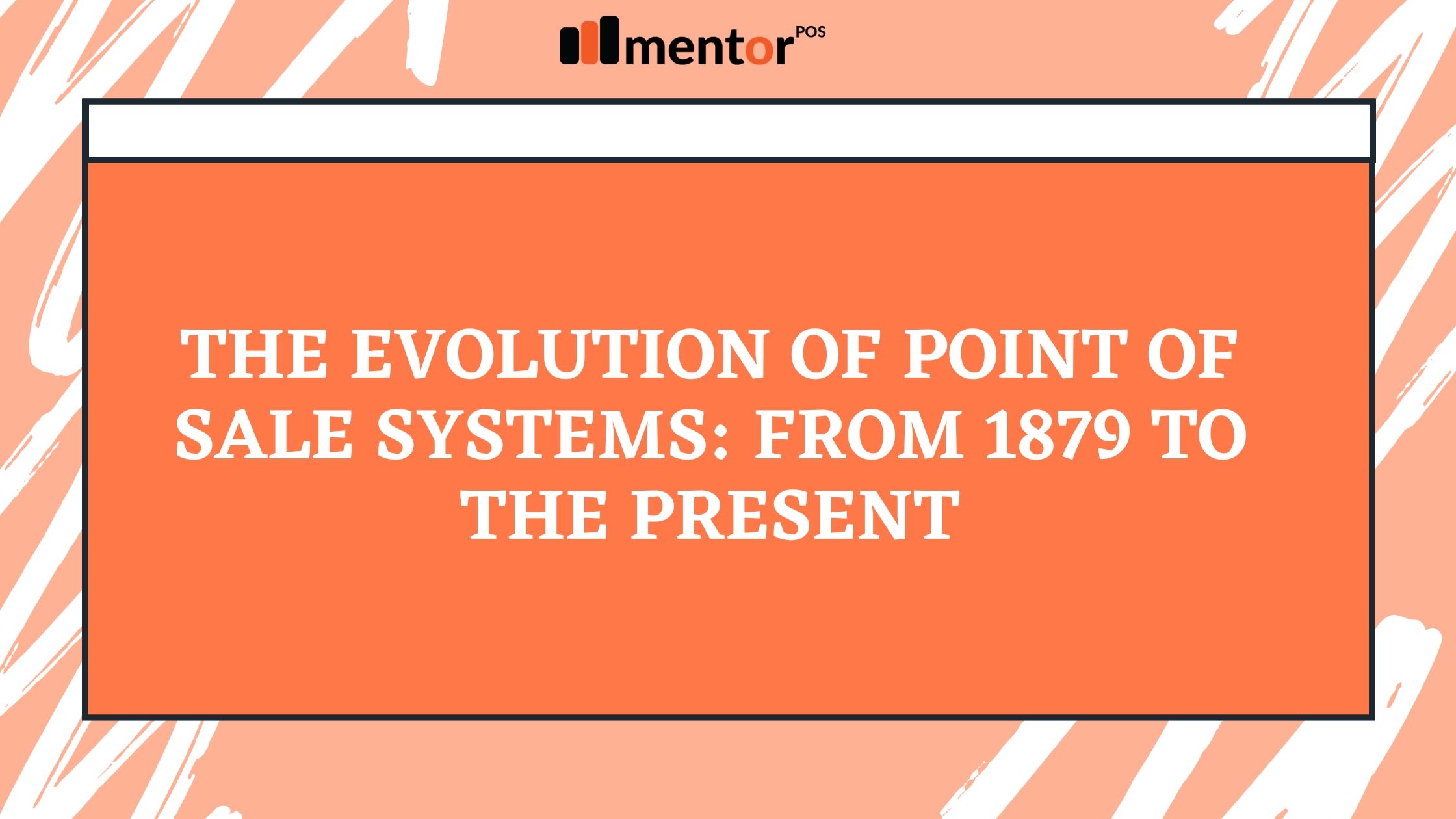The way we buy and sell goods has evolved dramatically over the past century, and at the heart of this transformation lies the Point of Sale (POS) system. From mechanical cash registers to cloud-based, AI-powered platforms, POS systems have revolutionized how businesses operate, especially in the retail and hospitality sectors.
This blog takes a deep dive into the fascinating history and evolution of POS systems — tracing their journey from humble beginnings in 1879 to the sophisticated technology-driven solutions of today.
1. The Invention of the Cash Register (1879)
The story of POS systems begins in 1879 when James Ritty, a saloon owner in Dayton, Ohio, invented the first mechanical cash register to prevent employee theft. Known as “Ritty’s Incorruptible Cashier,” this machine recorded sales and locked away money, creating a new level of accountability.
Ritty’s invention was later sold to businessman John Patterson, who improved and marketed it through the National Cash Register Company (NCR). This marked the first commercial use of POS technology, albeit in a mechanical form.
2. Electromechanical Registers (Early to Mid-1900s)
By the early 20th century, cash registers had evolved from purely mechanical devices to electromechanical systems. These machines were faster and included features like receipt printing and rudimentary sales tracking.
During this era, businesses began to appreciate the operational value of tracking sales and managing cash flow. However, the systems were still standalone, limited in functionality, and not connected to broader business systems.
3. The Emergence of Electronic POS Systems (1970s–1980s)
The next major leap in POS history came in the 1970s and 1980s with the introduction of electronic POS (EPOS) systems. These systems used microprocessors and could connect to printers and barcode scanners, enabling faster transactions and more accurate inventory control.
In 1973, IBM released one of the first computerized POS systems, used by retail giant McDonald’s to track orders and transactions. This system allowed restaurants to link front-of-house orders with kitchen operations — a revolutionary step in efficiency.
4. The Role of Personal Computers (1990s)
The 1990s saw a dramatic shift as personal computers (PCs) became commonplace. Businesses began replacing traditional registers with computer-based POS software that could run on Windows or DOS.
These systems offered:
- Multi-functional capabilities (billing, inventory, payroll)
- Graphical user interfaces
- Integration with back-office operations
- Basic customer relationship management (CRM)
Retailers and restaurants could now track sales trends, analyze business data, and manage customer information more effectively.
5. Introduction of Cloud-Based POS (2000s)
The 2000s introduced cloud computing, which led to another massive shift in POS systems. Cloud-based POS systems offered real-time access to data from anywhere, on any device with internet access.
Key advantages of cloud POS:
- Centralized management of multiple locations
- Automatic software updates
- Subscription-based pricing (lower upfront cost)
- Data backup and security
- Remote troubleshooting and support
This era made POS more accessible for small to medium businesses and empowered them with insights that were once exclusive to large enterprises.
6. Mobile and Tablet-Based POS (2010s)
With the rise of smartphones and tablets, the 2010s introduced mobile POS (mPOS) systems. Businesses no longer needed bulky hardware — they could use iPads, Android tablets, or even smartphones as fully functioning registers.
mPOS systems proved particularly useful for:
- Pop-up shops
- Food trucks
- Quick-service restaurants
- Events and trade shows
These systems were intuitive, portable, and highly cost-effective. They also supported modern payment methods like NFC, QR codes, and mobile wallets such as Apple Pay and Google Pay.
7. Modern POS Systems: Smart, Integrated, and AI-Powered (2020s–Present)
Today’s POS systems are more than just transaction tools — they are complete business management platforms. Modern POS software is equipped with features that integrate sales, inventory, CRM, accounting, marketing, employee scheduling, and analytics into one system.
Advanced POS platforms offer:
- AI-powered sales forecasting
- Customer loyalty programs
- Omnichannel integration (online + offline sales)
- Real-time inventory management
- Table and delivery management for restaurants
- Data-driven decision-making tools
With these advancements, POS software helps businesses of all sizes improve efficiency, reduce costs, and grow smarter.
8. POS in the Future: What’s Next?
Looking ahead, POS technology is likely to become even more integrated and intelligent. Innovations on the horizon include:
- Voice-activated and gesture-controlled POS interfaces
- AI-based personalized marketing through POS data
- Blockchain-enabled transaction tracking
- Augmented Reality (AR) for in-store experiences
- Seamless integration with IoT-enabled kitchen and delivery devices
As customer expectations evolve and digital transformation accelerates, POS systems will continue to be a crucial part of business infrastructure.
Conclusion
From Ritty’s mechanical invention in 1879 to today’s cloud-based, AI-integrated business tools, the evolution of POS systems mirrors the evolution of commerce itself. What started as a simple machine to prevent theft has now become an all-encompassing solution that drives growth, enhances efficiency, and unlocks new opportunities for business owners.
If you’re looking to future-proof your restaurant or retail business, consider a modern POS system like MentorPOS. With powerful features such as real-time reporting, kitchen display integration, and multi-location management, MentorPOS helps you run your business smarter and more efficiently.
Experience the future of POS with MentorPOS — designed for businesses that want to scale.







